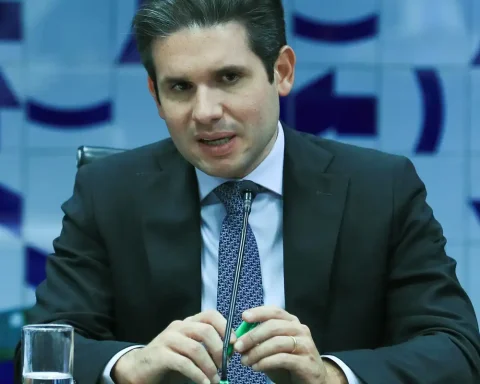As of this Tuesday, the “photo recipes” will no longer be valid for people with chronic diseases who had been exempted from the resolution that at the end of December ended this exceptional form of prescription in force since March 2020 due to the pandemic, according to Health Minister Carla Vizzotti confirmed this Monday, announcing that “this week” the regulatory decree for the electronic prescription law will come out.
The official explained that together with the regulation of Law 27553 sanctioned in July 2020, the health portfolio will issue two complementary resolutions: the one that provides for the creation of the federal health license for health professionals registered in different jurisdictions and another that approves the registration process of digital platforms and apps that issue electronic prescriptions with a view to their subsequent registration and inspection.
“The regulatory decree (of the electronic prescription law) has to come out this week,” Vizotti said during a meeting with journalists at the National Ministry of Health.
“And although it is a complete regulation, it is not that everything will change the next day, but that we begin to follow a path of adaptation of many strategies that are already in operationbut they have to start meeting minimum standards,” he added.
It should be clarified that what pharmacies will no longer accept for the sale of medicines is the photo of the prescription made on paper and received by the patient via email or WhatsApp, while the physical prescription modalities will remain in force as they have been until now ( paper) and the electronic prescription.
“What is going to happen tomorrow is nothing different from what has been happening, simply that there are no more possibilities to continue accepting the photo recipe, something that has been happening for a long time in all the provinces and in a large part of the security social, while there was a group especially of prepaid and especially in the area of Amba that continued to apply this modality (for patients with chronic diseases)”, explained the head of the cabinet of the health portfolio Sonia Tarragona.
In this sense, he recalled that “photo recipe was a temporary instrument”, implemented in an “exceptional” way to prevent the mobility of people during the ASPO due to a health emergency situation that “ended a long time ago”, for which it is necessary “to return to the normality that was and still is the paper recipe with the handwritten signature” or the electronic prescription with digital signature, “because there is a law of professional practice (of medicine) and a pharmacy law that establishes when a prescription is valid” that were not fulfilled in the photo recipe, mainly in terms of security and traceability .

On December 26, 2022, the Ministry issued Resolution No. 3622/2022 which established that, in replacement of the physical prescription, photos of prescriptions made on paper and sent via web, mail or WhatsApp to pharmacies to purchase medicines in pharmacies.
Two days later, it was agreed that patients with chronic illnesses from Obras Sociales and prepaid who had been using prescriptions for medicines made on paper and sent as a photo through electronic means, could continue to do so until February 28.
“Given the imminence of the holidays, it was allowed for a particular group that (the validity of the photo prescription) be extended until tomorrow, but it is not that it was an extension but an exception or an agreement that was made with pharmacies and financiers to allow them until February in these cases, because many had already been issued that way,” Tarragona said.
In relation to the delay in the regulation of the electronic prescription law, Tarragona explained that “it is about to come out, it is already finished” and if it has not been regulated until now “it is not because they did not want to do it” but because it is a process of great “complexity” that it was necessary to work extensively with all the subsectors of the health system and pharmacies, but also because “the act of prescription is part of a larger medical act that is telemedicine or telehealth and since there was also in Congress projects (in this sense) the idea was to wait for the regulation of all the virtual exercise of medicine to be able to issue the electronic prescription”.
“As this did not happen due to different circumstances that do not depend on this ministry, then the team (working with the participation of all the jurisdictions and subsectors involved) advanced in the regulation of electronic prescriptions that will surely have to be adapted later when the telemedicine law comes out “he explained.
For his part, the Undersecretary of Quality, Regulation and Oversight of the Ministry of Health, Claudio Ortiz, stated that the regulation “is federal, is progressive, and clearly marks all (digital) platforms that are in use” for the issuance of electronic prescriptions. they can continue doing so” because “the only thing that the regulation is marking is where we are going, it is a horizon, what are the issues that should be improved in the future”.
In this sense, Ortiz explained that based on the regulations and one of the resolutions that will soon be published, “we are going to register these platforms to have an overview of what they are and what situation they are in today” while “in parallel we begin to work with the control areas of each of the provinces in standards” whose compliance will begin to be demanded “progressively from a control system that will begin in March 2024”.
“We saw that there are more than 50 platforms in use with different levels of development and what we are setting for them is that we go towards this future in the sense of first complying with the drug prescription law – that marks some lines and that now allows the digital or electronic prescription -, then the law of prescription for generics that also has to be complied with in the electronic prescription – it is prescribed by generic and not by commercial name – and in third instance the law of protection of personal data -so that there is security in the data of the people-, also the law of rights of the patients and all the pharmacy laws”, he said.
The official also announced that, via resolution, a “federal health license” will be created that will grant medical professionals “a single number that will identify them as health professionals” within a federal registry “without having to do any additional paperwork.” to the registration already carried out in the different jurisdictions in which they practice, “and that is what will allow us to inter-operate” in terms of health agents.
The three officials stressed the importance of the “interoperability” of the electronic prescription system “is one of the axes towards the integration of the health system” given that “the subsystems will be able to dialogue” on issues such as the identity of patients, the generic prescription, the rational use of medicines, the validity of the doctor’s registration, the relationship between the prescription and the diagnosis, the indicated doses, among other issues.


















